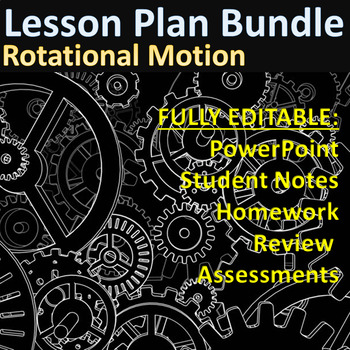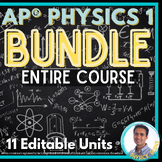Rotational Motion PPT | Full Unit Bundle | Physics (Angular, Torque)
- Zip
What educators are saying
Also included in
- AP® Physics 1 Full Year Curriculum. This Lesson Plan bundle includes: PowerPoints, Homework, Quizzes, Reviews, Pacing Guide, Guided Notes, and Tests for every topic. Answers with explanations to everything. Everything is fully editable.These are the exact lessons and assignments I give to my studentPrice $259.99Original Price $419.89Save $159.90
Description
Rotational Motion High School Physics Curriculum. The bundle is differentiated for CP (Regular), Honors, or AP Physics 1. The bundle includes PowerPoint, Guided Notes, Homeworks, Review, Pacing Guide, and Assessments. This full lesson plan includes topics on: Angular Kinematics, Torque, Angular Dynamics, Angular Kinetic Energy, and Angular Momentum.
Every example problem has a Youtube video that shows how to solve each problem with tips and tricks to teach your students in the most effective way possible.
Fully Editable:
PowerPoint (80 Slides)
- 46 example questions pertaining to Rotational Motion
- Notes, example problems, and clips
Guided Notes (17 Pages)
- Optional packet for the students that follows along with PowerPoint
Homework and Review (13 pages)
-Three packets that should be distributed according to pacing guide
-Pacing Guide
Assessments (6 pages)
- Two Assessments that should be done according to the pacing guide
_____________________________________________________________________________________________
The Entire Year's Course Save Over 20%
________________________________________________________________________________________
Check out my Youtube Channel, Facebook Group, and Follow my Store :)
If this product could really benefit your classroom, but you are not in a good financial situation to buy the product, please contact me and I will give you the product for free, no questions asked. Raymondburnseducator@gmail.com





